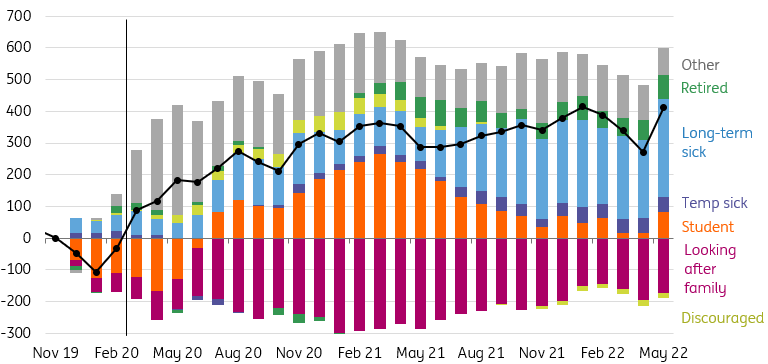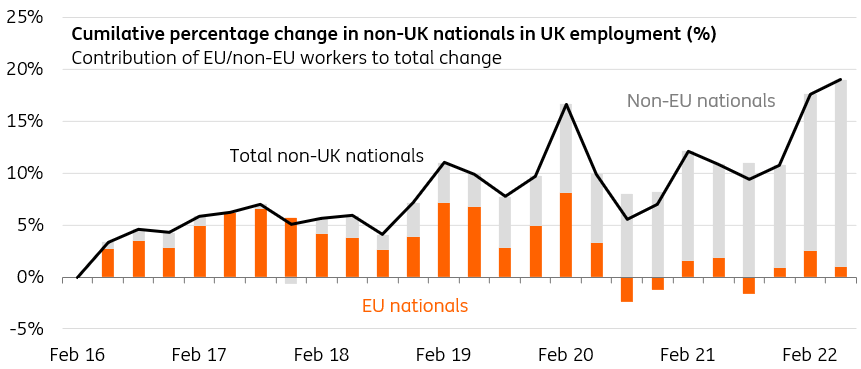SolStock/E+ via Getty Images
By James Smith
There are three key takeaways from the latest UK jobs numbers. Firstly, hiring demand is clearly falling, and that’s most evident from a decline in unfilled job vacancies – a trend that’s likely to continue, according to more up-to-date online vacancy numbers. That’s not to say firms are letting staff go – redundancy levels haven’t budged from their lows over recent weeks and unemployment doesn’t appear to be rising, even if the jobs market has stopped tightening.
The second thing that stands out is that the number of people inactive – neither employed nor actively seeking a job – increased abruptly again last month. As the chart shows, the vast majority of the increase in inactivity we’ve seen since the pandemic began (and indeed in recent months) is linked to long-term sickness. There are now more than 300,000 extra people that fall into this category compared to pre-pandemic, and the challenges in the NHS suggest this story unfortunately isn’t going to improve very quickly.
Contributions To The Increase In Inactivity Since Late 2019 (ONS, ING)
The final takeaway is that the number of foreign nationals working in the UK jobs market has increased noticeably this year, having fallen earlier in the pandemic, though this is almost solely driven by non-EU workers. The number of EU nationals working in the UK is down more than 6% compared to the 2019 average.
All of this presents a complicated picture for the Bank of England. Hiring demand is fading, but at the same time the skill shortages and labour supply issues that have plagued the jobs market for several months now are showing only limited signs of improvement. Inactivity remains high, even if migration – a key source of worker shortages through the pandemic – is showing some signs of bouncing back.
The Number Of Non-EU Nationals Working In The UK Has Increased Over Recent Months (ONS, ING)
The Bank of England’s official forecasts point to a material increase in the unemployment rate over the next couple of years, but policymakers will be looking for signs that firms are “hoarding” staff even where margins are squeezed, amid concerns about their ability to rehire again in the future. Wage growth has decent momentum right now, and the committee will be concerned that this could be sustained.
In practice, we think wage pressures will begin to cool as margins are squeezed into winter. But for now, we think there’s not much in these latest figures that will stop the Bank of England from hiking rates by 50bp again in September, even if we are nearing the end of the tightening cycle.
Content Disclaimer
This publication has been prepared by ING solely for information purposes irrespective of a particular user’s means, financial situation or investment objectives. The information does not constitute investment recommendation, and nor is it investment, legal or tax advice or an offer or solicitation to purchase or sell any financial instrument. Read more.


Be the first to comment